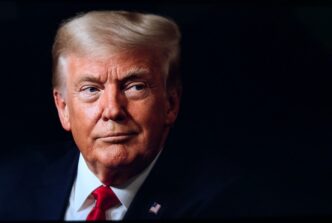President Donald Trump recently introduced extensive new tariffs on a wide range of imported goods into the United States. These tariffs include a 10 percent minimum tax on imports from outside North America, various tax rates on Canadian and Mexican goods, and a 25 percent tax on cars manufactured outside the United States. Additionally, there is a complex assortment of country-specific tariffs ranging from 10 to 50 percent.
These tariffs are anticipated to have a significant impact on the U.S. economy. Current indicators, such as the S&P 500, show a decline of approximately 4 percent. Predictions from the Budget Lab at Yale and an analysis by an economics professor at Auckland University of Technology suggest that the tariffs could reduce the average U.S. household’s annual income by around $3,789 and $3,487 respectively in 2024 dollars.
Throughout Trump’s second presidential term, several legal challenges have arisen, often involving disputes between the president and the courts. The new tariffs could lead to legal challenges, although the outcome remains uncertain. The president has broad authority over tariffs under federal laws, yet the Supreme Court has previously used the “major questions” doctrine to challenge executive actions deemed overly ambitious or significant.
The “major questions” doctrine is a relatively new legal concept introduced by the Court’s Republican majority, and its application is unpredictable. While it has been used to overturn executive actions during the Biden administration, its application to a Republican president like Trump is untested. This introduces uncertainty regarding the potential for Trump’s tariffs to be challenged under this doctrine.
The executive order announcing these tariffs cites the International Emergency Economic Powers Act and the Trade Act of 1974 as sources of authority. These laws grant the president substantial discretion in regulating trade and imposing tariffs, especially under a declared national emergency. However, these declarations and the definitions of terms like “national emergency” remain vague, offering significant latitude in interpretation.
The comparison to the Biden administration’s student loan forgiveness plan, which was struck down by the Supreme Court, highlights the potential for similar judicial scrutiny. The Court ruled against the loan forgiveness program by citing its vast economic impact, a rationale that could also apply to Trump’s tariffs, which are projected to cost U.S. consumers significantly.
While there is historical precedent for sweeping tariffs, such as those imposed by President Richard Nixon in 1971, legislative changes since then complicate the current landscape. Debate continues about whether the “major questions” doctrine should apply directly to the president, further clouding the legal framework governing Trump’s tariffs.
The Bottom Line
- The introduction of these tariffs could result in increased prices for imported goods, affecting consumer purchasing power and possibly leading to inflation.
- U.S. households might experience a decrease in real income due to the economic impacts of the tariffs, influencing their overall financial stability.
- Legal challenges to the tariffs could set precedents that affect the scope of presidential authority over trade policy in the future.
- Businesses reliant on imported goods might face challenges in maintaining competitive pricing, potentially impacting their operations and profitability.
- The tariffs could influence international trade relations, affecting diplomatic and economic ties between the United States and its trading partners.








